Lovely chocolate cake (springform pan) and a rich cream cheese and dulce de leche frosting.
My friend Cherrie attended a cooking class awhile back and I couldn’t go – I think I was volunteering that morning at my church. I “work” in my church’s Samaritan Care Center twice a month, where it is staffed by 2-3 volunteers every weekday, who pray for church members (and non-members who regularly attend the church) going through tough times. It could be illness, cancer, other medical issues, divorce, grief, hospitalization, for their family members too, etc. We make 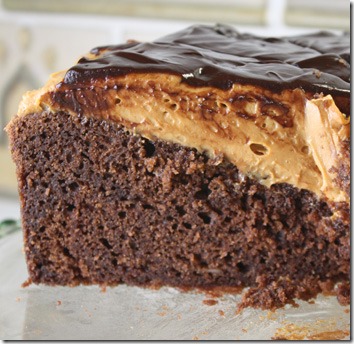 numerous phone calls to make sure we’re praying for the right things, and just let them know we’re praying for them. It makes a big difference in the lives of many people, to just know someone cares. I’m blessed each and every time I volunteer – someone gives a big “thank you,” or they tell us what a lift it gives them to hear from somebody.
numerous phone calls to make sure we’re praying for the right things, and just let them know we’re praying for them. It makes a big difference in the lives of many people, to just know someone cares. I’m blessed each and every time I volunteer – someone gives a big “thank you,” or they tell us what a lift it gives them to hear from somebody.
Anyway, I couldn’t go to the class, but Cherrie shared the recipes, and said this dessert was the best of the bunch. Since she knows I enjoy baking, I tried this recipe first. My weekly nighttime bible study was meeting at my house, so I used that as a reason to make this cake. I parceled out the left overs so I wouldn’t have any of it in my refrigerator, to tempt me. I ate a tiny sliver of it – oh yes, it was good!
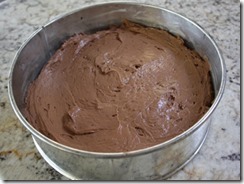 The cake is a light textured chocolate cake – made in a springform pan, lined on the bottom with parchment, and the sides were butter-greased. It was easy enough to make. There at left you can see the batter in the pan. Once out of the oven, the center of the cake dropped some. Sometimes cakes done in a springform do that. Don’t understand why. Anyway, once it was cooled, I used a wide spatula to get the cake off onto a footed cake stand. Easy enough to do, too.
The cake is a light textured chocolate cake – made in a springform pan, lined on the bottom with parchment, and the sides were butter-greased. It was easy enough to make. There at left you can see the batter in the pan. Once out of the oven, the center of the cake dropped some. Sometimes cakes done in a springform do that. Don’t understand why. Anyway, once it was cooled, I used a wide spatula to get the cake off onto a footed cake stand. Easy enough to do, too.
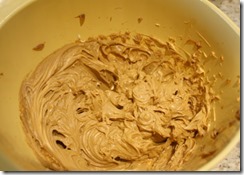 Then I made the frosting (see photo at right)– canned Dulce de Leche (it’s a thick Mexican caramel sauce), cream cheese, butter and vanilla. It was super-easy to spread on the top of the finished cake.
Then I made the frosting (see photo at right)– canned Dulce de Leche (it’s a thick Mexican caramel sauce), cream cheese, butter and vanilla. It was super-easy to spread on the top of the finished cake.
A small amount of chocolate sauce was next – I had a little trouble with it – it was supposed to be a drizzle (melted chocolate, butter and a tetch of warm water), but I just couldn’t get it to drizzle – it wanted to drop in round plops – so I just spread it all over the top. DO refrigerate the cake if you have left overs – with cream cheese in it, you need to keep it chilled.
What’s GOOD: this cake was really scrumptious. Rich? Absolutely. The frosting puts it over the top – but because the dulce de leche sauce has cream cheese mixed in, it gave it a really lovely texture, soft, great mouth-feel. The cake was really nice. Even though I used dark chocolate, it wasn’t overly deep in chocolate flavor – it certainly WAS chocolate. The cake isn’t dense at all. The frosting is what makes this cake.
What’s NOT: nothing, other than it takes an hour or so to make it. The cake batter is quite standard, and the frosting was too. For how beautiful it was, it actually was quite easy to make. Not a bad thing!
printer-friendly PDF and MasterCook 15/16 file (click link to open recipe)
* Exported from MasterCook *
Chocolate Cake with Dulce de Leche Frosting
Recipe By: From my friend Cherrie, who got it at a private cooking class
Serving Size: 10
CAKE:
3/4 cup unsalted butter
5 ounces bittersweet chocolate — or dark chocolate
2 1/4 cups cake flour
1 teaspoon baking soda
3/4 teaspoon baking powder
3/4 teaspoon salt
1 1/2 cups sugar
3 large eggs
2 teaspoons vanilla
1 1/2 cups sour cream
FROSTING:
3 tablespoons unsalted butter — softened
8 ounces cream cheese — softened
1 teaspoon vanilla
13 3/8 ounces Dulce de leche — (canned)
DRIZZLE:
1/4 cup bittersweet chocolate — chopped
1 tablespoon butter
1 teaspoon warm water
1. CAKE: Preheat oven to 325°F. Line a 9-inch springform pan with parchment paper. Butter the sides of the pan.
2. In a large bowl microwave the butter and chocolate for 2-3 minutes until melted. Stir until all the chocolate and butter are completely mixed. Cool for 5 minutes.
3. In a medium bowl whisk together the flour, soda, baking powder and salt.
4. In a stand mixer, add the chocolate mixture, then add sugar and mix in thoroughly. Beat in eggs and vanilla. Alternately, beat in the sour cream and flour mixture, starting with sour cream.
5. Transfer batter to the prepared pan and bake for 1 hour to 1 hours 15 minutes, or until a toothpick inserted in the center comes out clean. Cool cake completely on a wire rack. Once cool, remove cake from the pan and set on a serving plate.
6. FROSTING: Beat butter and cream cheese with a mixer. Add vanilla and the Dulce de Leche and beat until smooth. Frost the cooled cake with the icing.
7. DRIZZLE: In a small bowl microwave the butter and chopped chocolate for about 45 seconds to a minute. Stir it until smooth and stir in the warm water. Drizzle mixture over the cake.
NOTES: Cake can be made a day ahead. Cover and refrigerate, then remove cake an hour before serving. If you want to make a half of a recipe, use a 7-inch springform pan. Can also be made into cupcakes.
Per Serving: 758 Calories; 48g Fat (54.9% calories from fat); 12g Protein; 77g Carbohydrate; 3g Dietary Fiber; 163mg Cholesterol; 496mg Sodium.





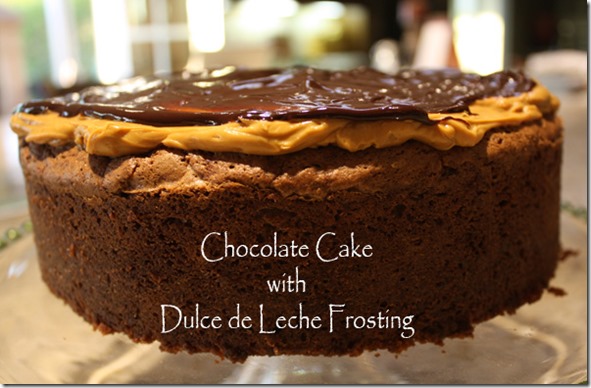

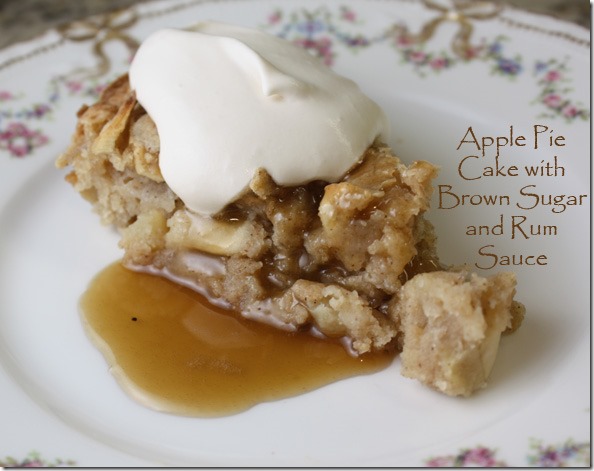
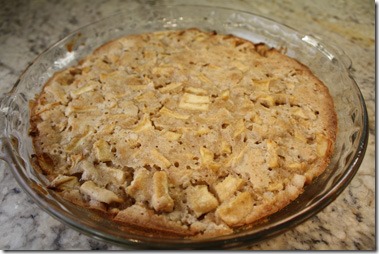
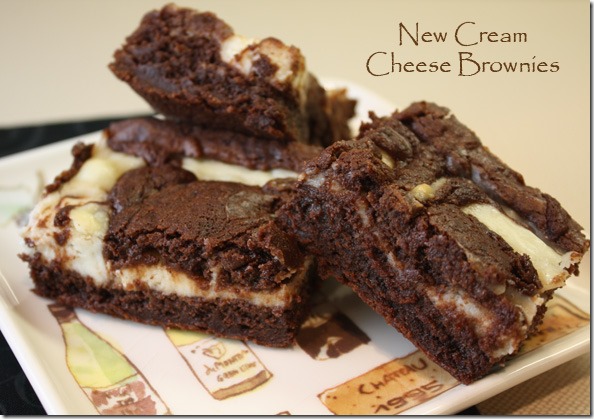
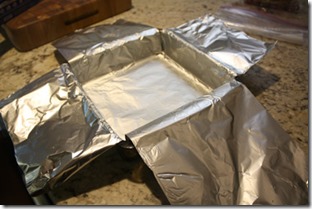
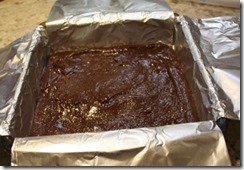
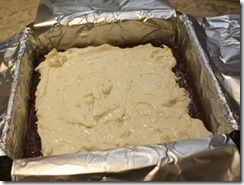
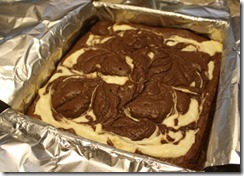
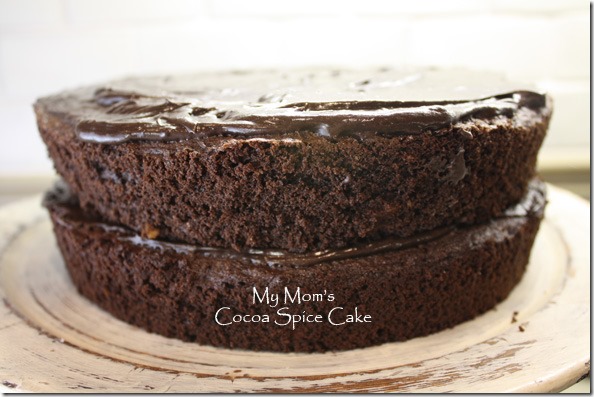
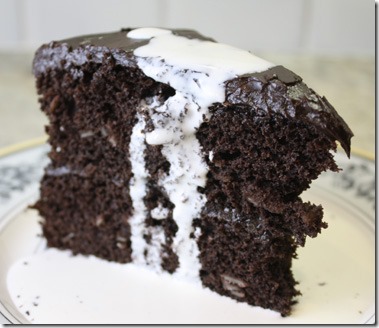
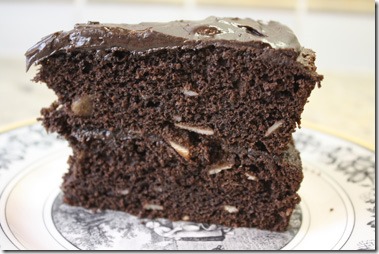
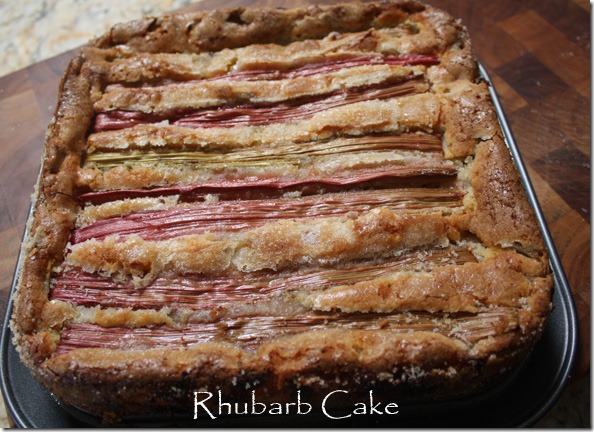
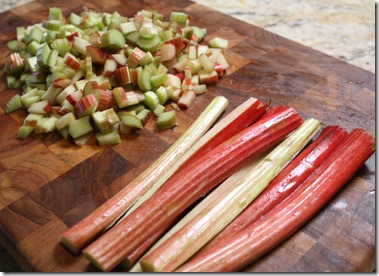
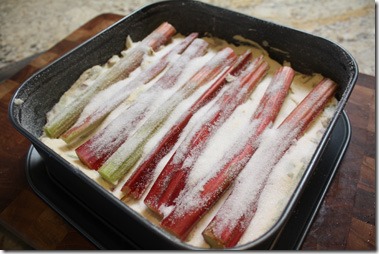
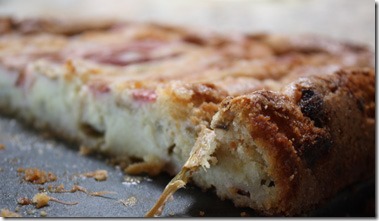

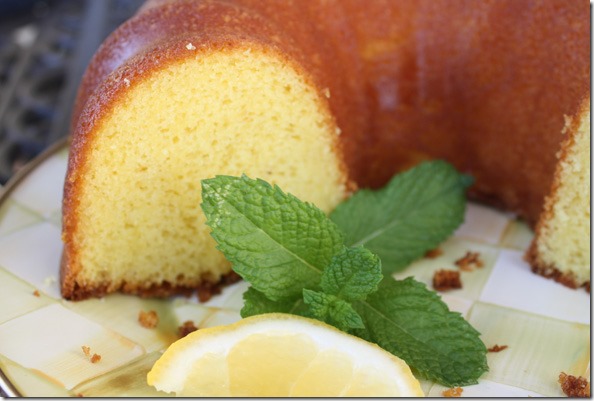
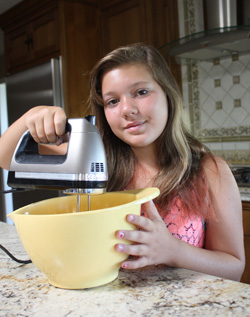
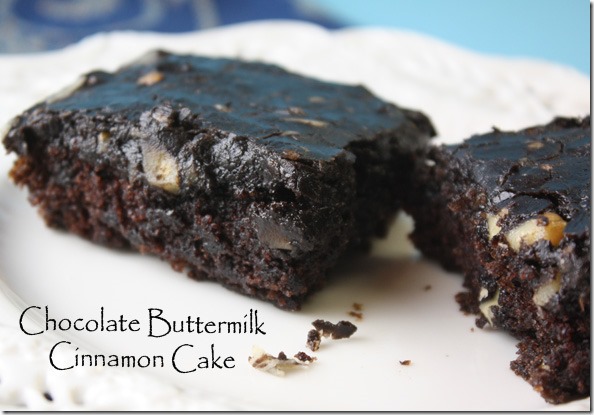
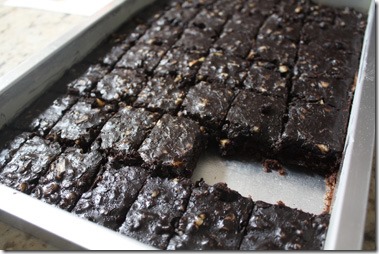
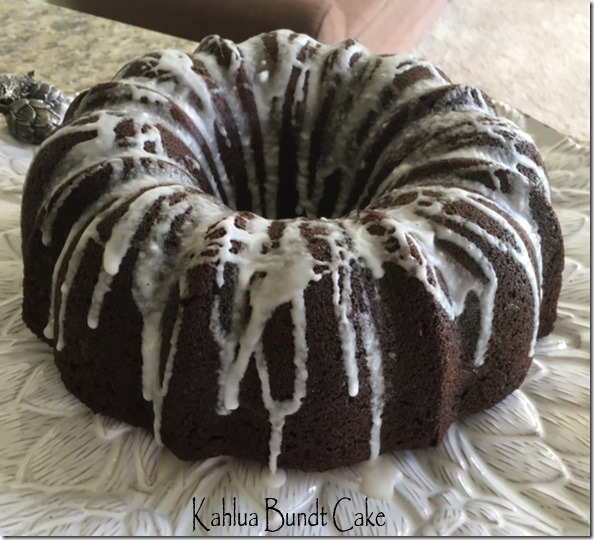
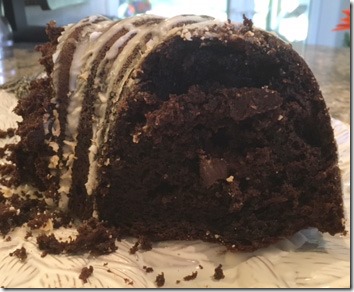
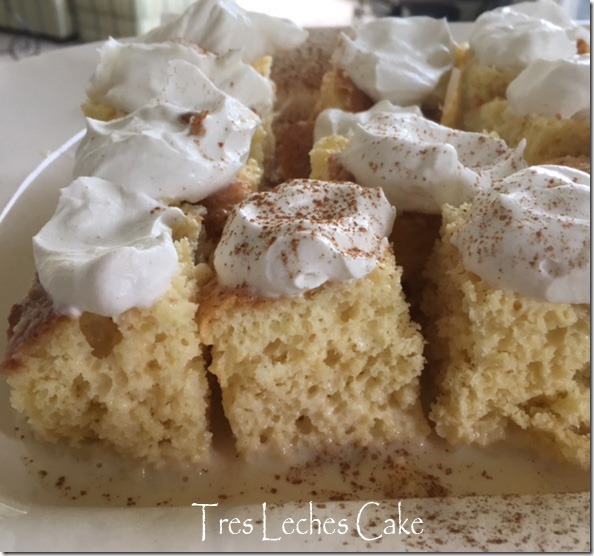
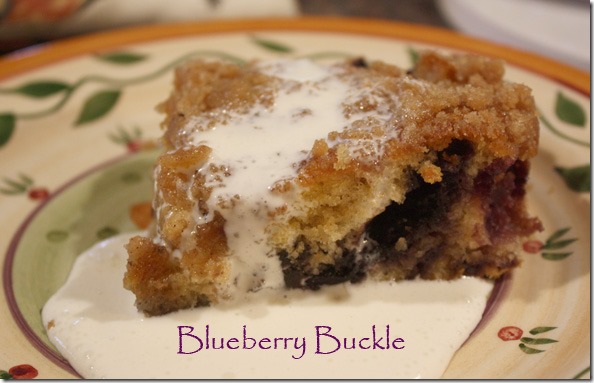
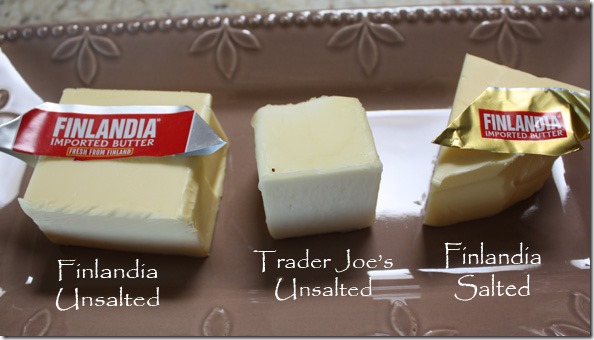
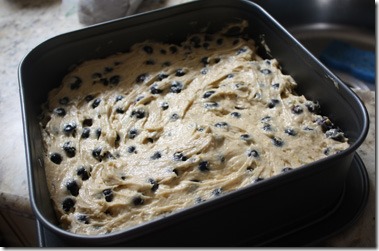
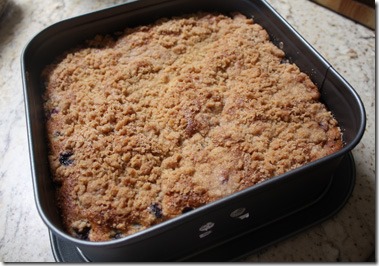
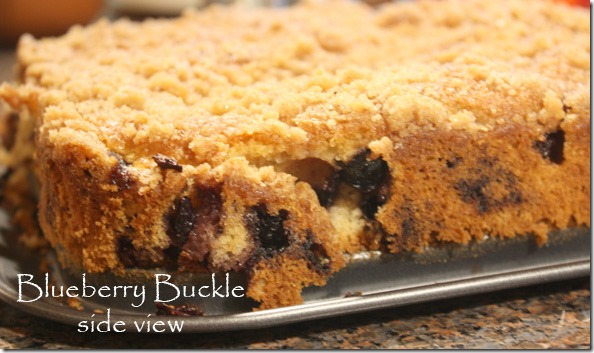
Leave a Comment!